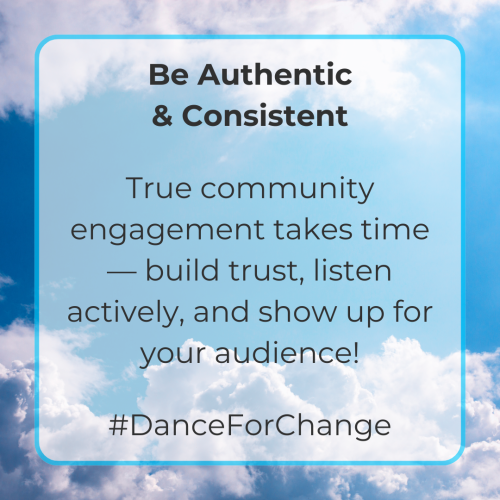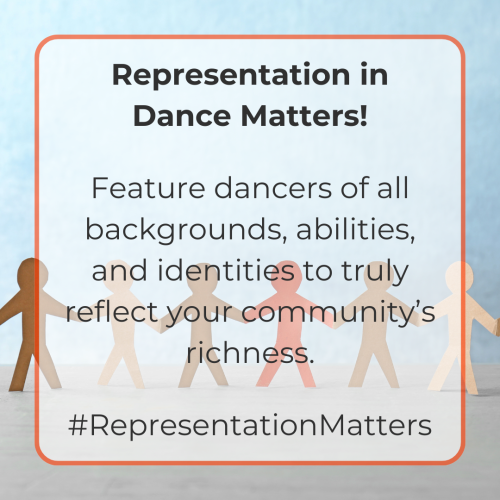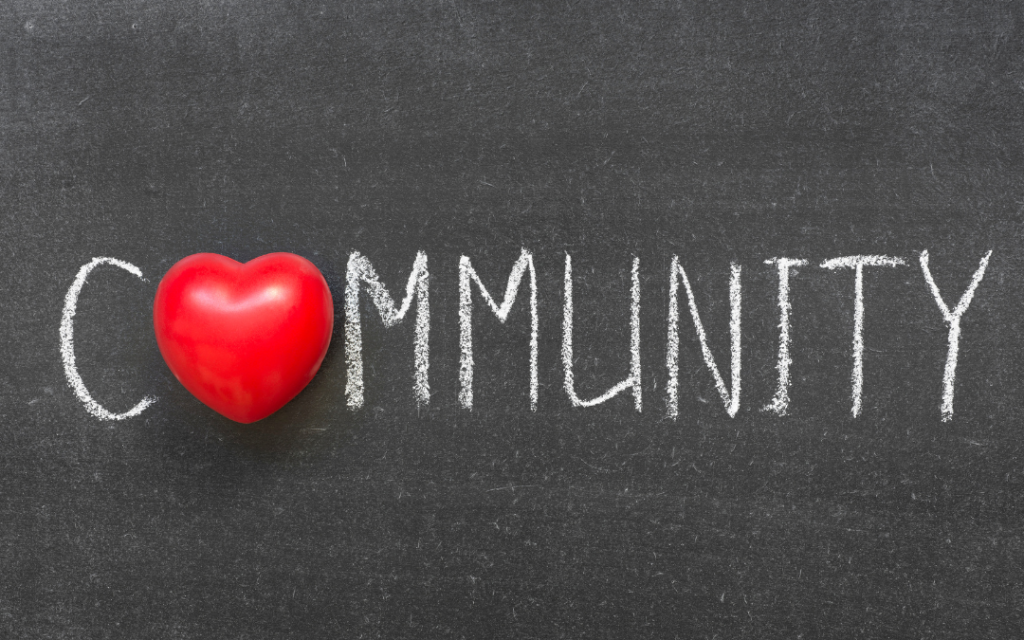As a dance artist, your work thrives when it connects with people. Whether you’re an independent performer, a choreographer, or part of a company, engaging your community is essential to growing your audience and making a lasting impact. By building meaningful relationships and promoting your art in innovative and inclusive ways, you can cultivate a strong and supportive network that enhances both your artistic career and the cultural landscape of your community.
Understanding Your Audience and Their Needs
Before diving into community engagement, take the time to understand who your audience is. Are they dance enthusiasts, general arts supporters, looking for a cultural experience, or newcomers looking to connect with their new community? Are there barriers preventing certain communities from engaging with dance due to accessibility concerns? Consider:
- What types of dance resonate most with them?
- How can you make performances welcoming to diverse cultural backgrounds?
- What are the key barriers preventing more people, including disabled individuals, from engaging with dance?
- How can you make your performances and events more accessible in terms of location, cost, and sensory considerations?
Conducting surveys, attending local events, and engaging in conversations with community members can help you tailor your approach.
Host Interactive Events and Workshops
One of the best ways to engage people is to get them involved. Offering workshops, open rehearsals, or dance classes can help demystify the art form and make it more approachable. To foster inclusivity, consider:
- Hosting community dance workshops for different skill levels, ages, and abilities.
- Ensuring that workshops and performances are held in accessible venues with step-free access and accommodations for those with mobility impairments.
- Offering pre-show talks or Q&A sessions with sign language interpreters or captioning for the hearing impaired.
- Organizing free or pay-what-you-can events to increase accessibility.
Collaborate with Local Organizations
Forming partnerships with local businesses, schools, cultural centers, disability advocacy groups, and other artists can expand your reach and create new opportunities. Some ideas include:
- Partnering with schools to introduce dance to students from diverse backgrounds.
- Collaborating with musicians, poets, or visual artists for interdisciplinary performances that celebrate multicultural perspectives.
- Teaming up with disability organizations to showcase the artistry of disabled dancers and ensure inclusive programming.
- Engaging with community centers that serve underrepresented groups, ensuring their voices and movement styles are represented.

Use Digital Platforms to Share Your Work Inclusively
Social media and digital platforms are powerful tools for promotion and engagement. Regularly sharing behind-the-scenes content, performance clips, and artist interviews can build excitement and reach a wider audience. To make your digital presence inclusive:
- Provide captions and transcripts for video content to support the hearing impaired.
- Offer image descriptions and alt-text for visually impaired users.
- Use local hashtags and geotags to connect with nearby audiences and diverse communities.
- Encourage audience participation with challenges, feedback requests, or community spotlights.
Digital platforms to consider:
- Threads
- Bluesky
- TikTok
- YouTube
- Substack
Participate in Community Events and Festivals
Being present in broader community events can introduce your art to new audiences. Consider:
- Performing at local festivals, cultural events, or charity functions that highlight diversity and inclusion.
- Volunteering to teach movement-based sessions in wellness programs that include seniors, individuals with disabilities, and marginalized groups.
- Engaging in artist talks and panel discussions to discuss dance’s role in inclusivity and accessibility within the arts.
Make Dance Inclusive and Accessible in All Aspects
Accessibility and inclusivity should be at the heart of your engagement efforts. Steps you can take include:
- Showcasing diverse dancers, including performers with disabilities, to reflect a broader range of experiences and talents.
- Providing performances in multiple languages or offering live translations where necessary.
- Ensuring venues have wheelchair access, quiet spaces for those with sensory sensitivities, and ASL interpreters for deaf audience members.
- Creating sensory-friendly performances with adapted lighting and sound options for neurodivergent individuals.
- Offering financial accessibility options such as pay-what-you-can or sliding-scale pricing.

Tell Compelling Stories That Reflect Diversity
People connect with stories. Share the narratives behind your work, your journey as a dance artist, and the impact dance has on the community. You can do this through:
- Blog posts or newsletters that highlight your creative process and the stories of diverse dancers.
- Short videos or interviews featuring your collaborators, audience members, and disabled or marginalized dancers.
- Sharing testimonials from people who have been inspired or transformed by dance.
Be Consistent and Authentic
Engagement isn’t a one-time effort; it’s an ongoing process. Consistency in your outreach, communication, and artistic presence will help you build a loyal audience over time. Stay authentic in your approach—people appreciate genuine passion and commitment to diversity, accessibility, and inclusivity.
Dance as a Bridge to Community Connection
Engaging your community as a dance artist isn’t just about promotion—it’s about fostering a shared appreciation for movement, creativity, and cultural expression. By taking intentional steps to connect with diverse groups, support accessibility initiatives, and embrace inclusivity in your programming, you can ensure that your art remains vibrant, relevant, and deeply valued by those around you. Whether through workshops, collaborations, or digital outreach, your efforts will not only grow your audience but also enrich the cultural fabric of your community.

